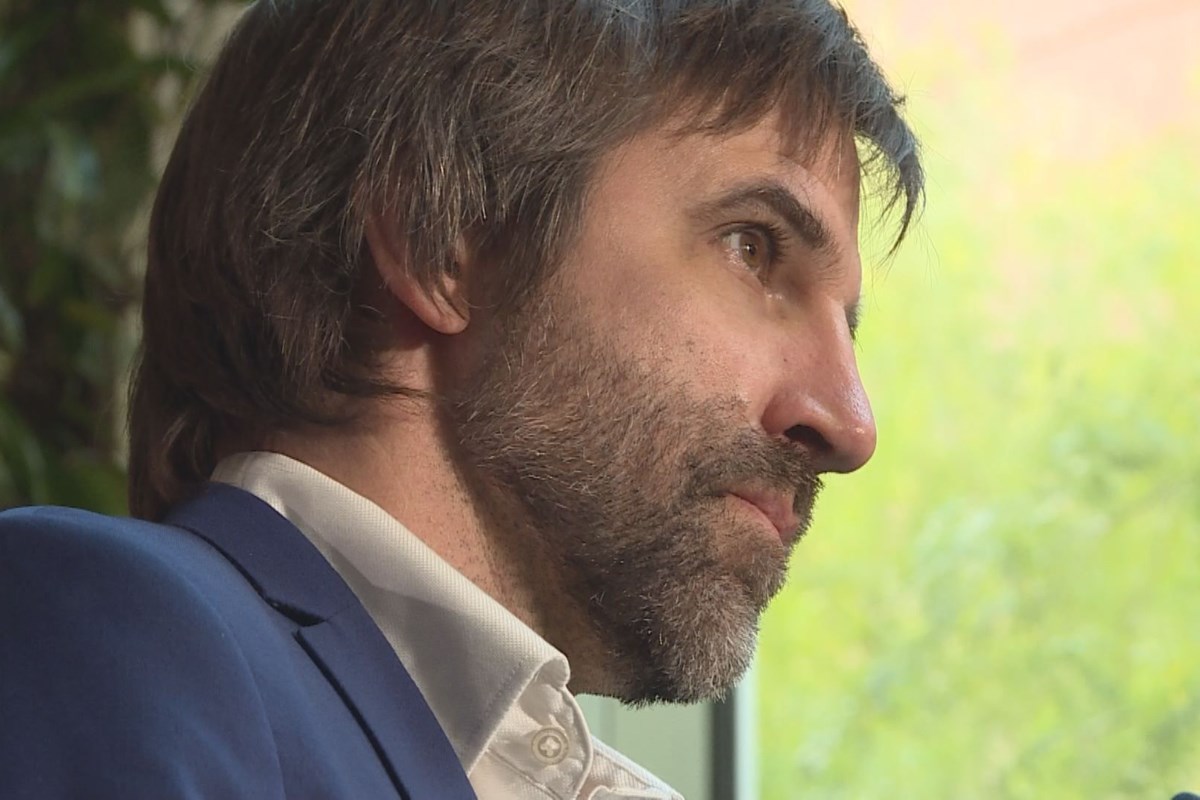I'm confused about who's involved here aside from the feds, Edmonton, and local Indigenous groups. They keep mentioning the "Edmonton
region", but no other communities are specifically named. You think they'd have at least gotten one other Mayor to be here.
EDIT: I can't speak for the other municipalities, but Mayor Katchur of Fort Saskatchewan confirmed that they were not part of these discussions unless they're being done with the River Valley Alliance.
A national urban park in the Edmonton region would promote access to green spaces and nature
EDMONTON, AB, March 14, 2022 /CNW/ - As Canadians, we know that green spaces in and around our cities are good for our health, good for wildlife, and good for the environment.
Today, the Honourable Randy Boissonnault, Minister of Tourism, on behalf of the Honourable Steven Guilbeault, Minister of Environment and Climate Change and Minister responsible for Parks Canada, together with the Honourable Amarjeet Sohi, Mayor of the City of Edmonton, Chief Tony Alexis, Alexis Nakota Sioux Nation and Confederacy of Treaty Six First Nations representative, and Audrey Poitras, President of the Métis Nation of Alberta, announced the launch of the pre-feasibility phase to explore the creation of a national urban park in the Edmonton region.
Parks Canada and the City of Edmonton will work closely with Indigenous partners to ensure that a national urban park in the Edmonton region showcases Indigenous stewardship, voices and stories, and offers opportunities for connections to the land and water based on Indigenous Knowledge and values.
A national urban park in the Edmonton region would mean better access to quality green space for Edmontonians and promote better mental and physical wellbeing as people spend more time in nature. It would also create jobs, strengthen the local economy, and compliment the City of Edmonton's tourism.
For nature, urban green spaces provide habitat for animals, including species at risk, and can serve as crucial corridors for wildlife. They are great examples of nature-based climate solutions, helping to cool cities and absorb rain water during extreme weather events. They can contribute to Canada's climate change objectives by sequestering carbon, and to the Government of Canada's commitment to conserve 25 per cent of its lands and waters by 2025, working toward 30 percent by 2030.
The National Urban Parks Program, announced in August 2021, is the next step for Parks Canada whose history over 110 years has provided Canadians a system of national parks, including Rouge National Urban Park, national historic sites and national marine conservation areas.
Quotes
"I am delighted to see that a national urban park in the Edmonton region is in the works. The river valley is a source of pride and inspiration for Edmontonians and Albertans. Green spaces such as this provide us with ready access to nature and all of the health benefits that come from being outdoors. Urban parks boost the municipal economy, generate tourism and employment opportunities, increase biodiversity and help mitigate the effects of the changing climate. Sharing this amazing space with Canadians makes great sense."
The Honourable Randy Boissonnault,
Minister of Tourism
"Edmontonians are united by our love of nature and getting outside. Being close to natural spaces increases wellbeing and connection. We are so lucky to have an incredible amount of green space across our city including the largest continuous area of urban parkland in the country. I am looking forward to partnering with Parks Canada, the Confederacy of Treaty Six First Nations, and the Métis Nation of Alberta to continue our long-standing stewardship of this land for all to enjoy."
The Honourable Amarjeet Sohi,
Mayor, City of Edmonton
"The Government of Canada is proud to work with partners like the City of Edmonton to create a network of national urban parks and ensure all Canadians have access to green spaces wherever they live, work and play. In addition to supporting better mental wellbeing and equity in urban areas, expanding nature access and protection in our urban spaces is also critical in the fight against biodiversity loss and climate change."
The Honourable Steven Guilbeault,
Minister of Environment and Climate Change and Minister responsible for Parks Canada
"Indigenous Peoples have a deep connection to the land so I am grateful for this development. Having a National Urban Park in Treaty 6 Territory would not only provide space for connecting to the Land, but would also provide opportunities for healing and cultural celebration for both Indigenous and non-Indigenous people. This is a step in the right direction towards Reconciliation."
Chief Tony Alexis,
Alexis Nakota Sioux Nation, Confederacy of Treaty Six First Nations Representative
"The Métis Nation of Alberta is pleased to be involved in the early stages of Parks Canada's National Urban Parks Program and looks forward to continued collaboration on this initiative. This program represents an important opportunity to develop green spaces that focus on preserving the natural habitats that exist around us all. An opportunity for growing partnerships with Canada, Alberta, and the City of Edmonton and for exploring new and innovative ways to protect, share, and appreciate the land and to celebrate the rich history, culture, and connection the Métis people have to the Edmonton area."
Audrey Poitras,
President, Métis Nation of Alberta
Quick Facts
- The vast network of protected areas administered by Parks Canada is a gateway to nature, history, and 450 000 km² of memories from coast to coast to coast.
- New national urban parks will be managed under a range of flexible governance models, including federally administered places, third party administered places, and various partnership approaches.
- In January 2022, Parks Canada Agency and the City of Edmonton signed a Statement of Collaboration to indicate their mutual interest in conducting a dialogue around the creation of a new national urban park in the Edmonton region.
- Both Parks Canada and the City of Edmonton hope to work, through this collaboration, in close partnership with the Confederacy of Treaty Six First Nations and the Métis Nation of Alberta, other significant regional land holders, and local stakeholders.
- In addition to the city of Edmonton, Parks Canada has signed statements of collaboration with the Meewasin Valley Authority and the municipalities of Winnipeg (MB), Halifax (NS), and Windsor (ON) and is working with others to identify potential urban park sites at various locations, including Colwood (BC) and Montreal (QC).
Related Links
SOURCE Parks Canada







